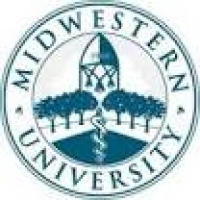






AZCOPT awards the degree Doctor of Optometry upon successful completion of the four-year professional curriculum in optometry. The first and second years of the curriculum emphasize basic health sciences, optics and visual science and students are introduced to clinical practice in simulation laboratories and through introductory courses. Visual consequences of disease are introduced in the second year. The third year, divided between a didactic and clinical setting, emphasizes the diagnosis and treatment of ocular dysfunction and disease. The fourth year is intensive clinical training that will include some on campus and off campus externship rotations. Clinical settings for external rotations include military facilities, veteran administration hospitals, public health service hospitals and specialty and/or private practices or clinics. Optometry Profession A Doctor of Optometry (O.D.) is an independent primary health care professional who is educated and trained to diagnose, treat, and manage disorders and diseases of the visual system, eye, and associated structures. Doctors of Optometry are also able to identify related systemic conditions that affect the visual system. They examine the eye for refractive conditions such as nearsightedness, farsightedness, astigmatism and presbyopia, eye movement and focusing abilities, diseases of the eye such as glaucoma and cataracts, and systemic conditions such as diabetes and hypertension. Doctors of Optometry prescribe eyeglasses and provide services such as contact lenses, low vision rehabilitation, and vision therapy. They may also prescribe medications for the management of eye diseases and perform certain surgical procedures. Doctors of Optometry are integral members of the primary health care team. As such, these professionals also co-manage diseases that affect eye health and may refer to other health care professionals. The degree is also an entry point into the health care system. Although optometrists provide primary eye care services, they may also dedicate themselves to specialized areas such as low vision rehabilitation, vision therapy & pediatrics, electrodiagnosis, sports vision therapy, ocular prosthetics, and advanced contact lens care. In terms of job satisfaction, length of training, prestige and job outlook optometry is considered to be a career with a very bright future. With a greater prevalence of diseases such as diabetes, hypertension, and glaucoma in the aging population, the demand for optometric services is expected to increase significantly during the next decade, as this population increases.
| Number | Duration |
|---|---|
| 4 | year |
Optometrists practice in a wide variety of settings. Some of the positions included below require advanced education or training beyond the O.D. Degree. * Private optometry, partnership or group practice * Ophthalmology practice * Federal government: o Veterans Health Administration optometry service o Public Health Service o Indian Health Service * Armed services (military) * Hospitals * Academia * Research * Health maintenance organizations * Ophthalmic industry * Franchise/retail office practices * Graduate education and residencies: o Master's or Ph.D. degree in Visual Science, Physiological Optics, Neurophysiology, Public Health, Health Administration, Health Information and Communication, or Health Education o Postgraduate clinical residency programs in Family Practice Optometry, Pediatrics Optometry, Geriatric Optometry, Vision Therapy and Rehabilitation, Low-vision Rehabilitation, Cornea and Contact Lenses, Refractive and Ocular Surgery, Primary Eye Care Optometry, and Ocular Disease.